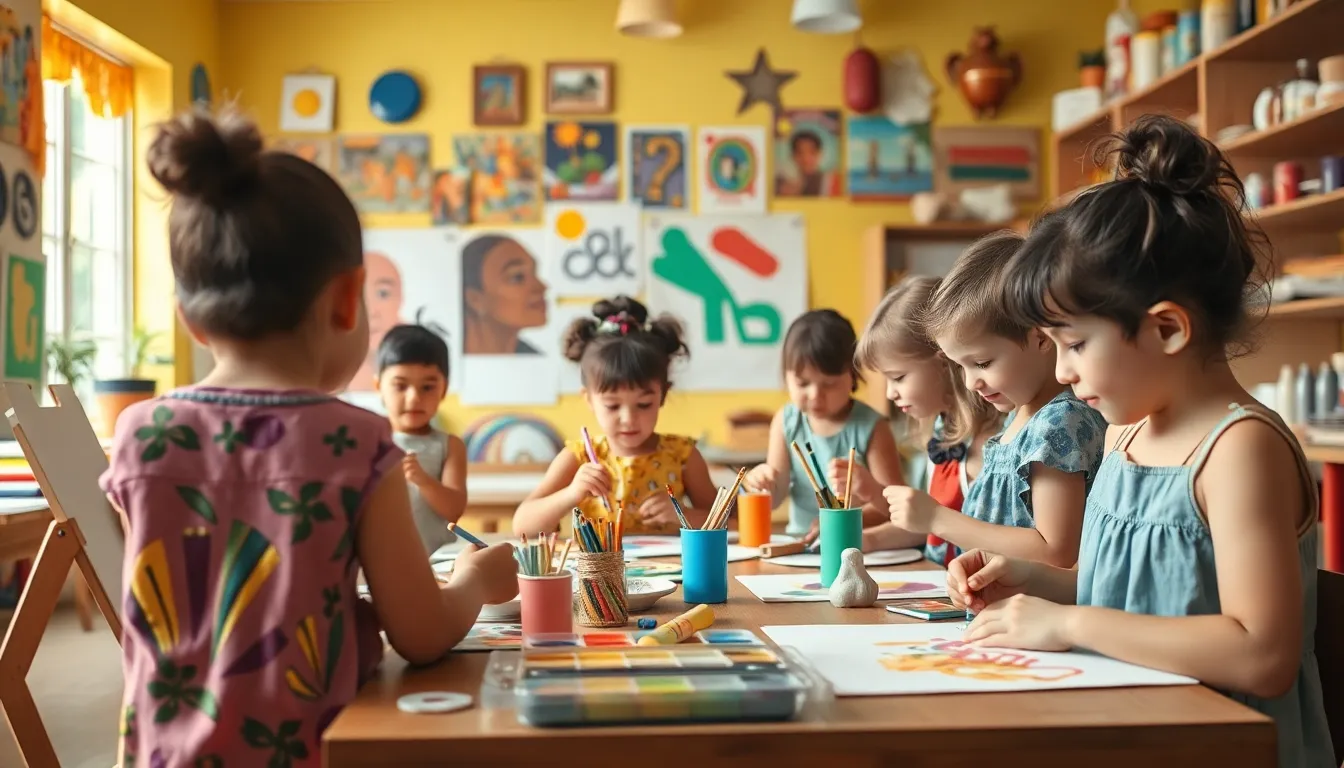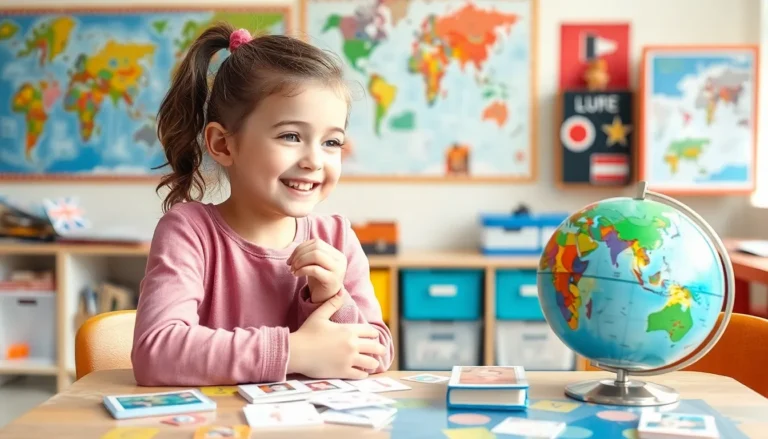Art isn’t just for the Picasso types; it’s for every tiny artist with a wild imagination. Elementary art projects unleash creativity and keep those little hands busy, transforming the mundane into masterpieces. Who knew that a few crayons and some paper could lead to a mini-Monet right in your living room?
Table of Contents
ToggleBenefits of Elementary Art Projects
Elementary art projects offer numerous advantages that significantly contribute to children’s development. Engaging in creative activities helps them express themselves while building essential skills.
Enhancing Creativity
Creative work encourages children to think outside the box. They explore their imaginations, discovering new ideas and ways to approach problems. Art challenges young minds to adapt methods and techniques, fostering innovative thinking. Experimentation leads to the development of unique artistic styles. Moreover, tapping into creativity early instills a lifelong love for self-expression. This nurturing of imagination results in balanced emotional growth, contributing to overall well-being.
Building Motor Skills
Art projects play a crucial role in developing fine motor skills in children. They use various tools such as brushes, scissors, and crayons, improving hand-eye coordination. Manipulating these tools requires precision, which enhances dexterity. As they create art, children learn to control their movements effectively and gain confidence in their abilities. Engaging in activities like cutting shapes or painting fosters spatial awareness. This foundation in motor skills supports other academic pursuits, such as writing and playing sports.
Popular Types of Elementary Art Projects

Elementary art projects encompass a variety of techniques that spark creativity among young students. Popular types include painting techniques, collage and mixed media, and sculpting with 3D art.
Painting Techniques
Watercolor painting introduces children to color blending and layering. Acrylic paints allow for vibrant and bold expressions, suitable for playful experimentation. Tempera paints give a matte finish and are easy to work with, making them ideal for classrooms. Whether using fingers or brushes, children get to explore textures and styles, enhancing their artistic confidence.
Collage and Mixed Media
Collage projects utilize various materials like magazines, fabric, and natural elements. Students can learn to assemble images and textures, developing their visual composition skills. Mixed media combines drawing, painting, and collage, giving kids opportunities for creative integration. These projects foster innovative thinking and allow for personal storytelling through art.
Sculpting and 3D Art
Sculpting projects engage students in tactile creativity using clay, paper mache, or recycled materials. Children learn to transform 2D ideas into 3D forms, which enhances spatial awareness. Techniques like molding and carving allow for unique expression and experimentation. 3D art projects promote a deeper understanding of structure and creativity, making art more approachable and fun for young hearts.
Tips for Successful Art Projects in the Classroom
Successful art projects in the classroom promote creativity and engagement. Focusing on age-appropriate materials and encouraging individual expression can significantly enhance the art experience for elementary students.
Choosing Age-Appropriate Materials
Selecting suitable materials is crucial for fostering creativity. Consider using non-toxic paints, sturdy papers, and eco-friendly supplies that align with safety standards. Crayons, markers, and colored pencils provide versatility for young artists. Additionally, incorporating various textures, such as fabric and natural elements, inspires exploration. Spark creativity by allowing students to experiment with different mediums. Ensuring that materials cater to varying skill levels enables all students to participate confidently in projects.
Encouraging Individual Expression
Individual expression plays a vital role in art projects. Create an environment where students feel safe sharing their unique perspectives. Encourage experimentation with colors, shapes, and techniques. Allowing student choice fosters a sense of ownership over their work. Providing positive feedback motivates young artists to embrace their ideas, regardless of technical skill. Celebrate diverse artistic styles, emphasizing that each piece is a personal reflection. Ultimately, encouraging authentic self-expression helps build children’s confidence and cultivates a love for art.
Incorporating Art Projects Across the Curriculum
Art projects seamlessly integrate into various subjects, enhancing overall student learning. They foster an environment that encourages exploration and understanding.
Art in Science Education
Art creates a dynamic learning experience in science education. Students engage in projects like nature sketches that help them observe and illustrate biological concepts. Observing plants or animals promotes attention to detail and nurtures critical thinking. Integrating art allows for creative experimentation, such as designing simple machines using recycled materials. Simple demonstrate principles of physics and engineering while students express themselves artistically. By depicting scientific phenomena through drawing or painting, children develop a deeper connection to the material and solidify their understanding of complex concepts.
Integrating Art with Language Arts
Language arts benefit significantly from incorporating art projects. Students can illustrate stories they read, allowing them to visualize characters and settings. Creating storyboards fosters comprehension and sequencing skills. Encouraging children to write poetry and pair it with visual art enhances their expression and imagination. Projects like comic strips allow students to blend storytelling with illustration, actively engaging them in both creative writing and artistic skills. When children express their ideas through art, they become more confident and connected to the language being taught. Integrating art turns language arts into a multi-dimensional learning experience, where creativity thrives.
Elementary art projects are vital in nurturing creativity and self-expression among young learners. These activities not only enhance artistic skills but also contribute to overall academic growth. By integrating art with various subjects, educators can create a richer learning experience that encourages exploration and innovation.
As children engage with different materials and techniques, they develop confidence in their abilities and a lifelong appreciation for art. Supporting their creative journeys fosters essential skills that extend beyond the classroom. Encouraging artistic expression in a safe and supportive environment cultivates a generation of imaginative thinkers ready to tackle future challenges.



